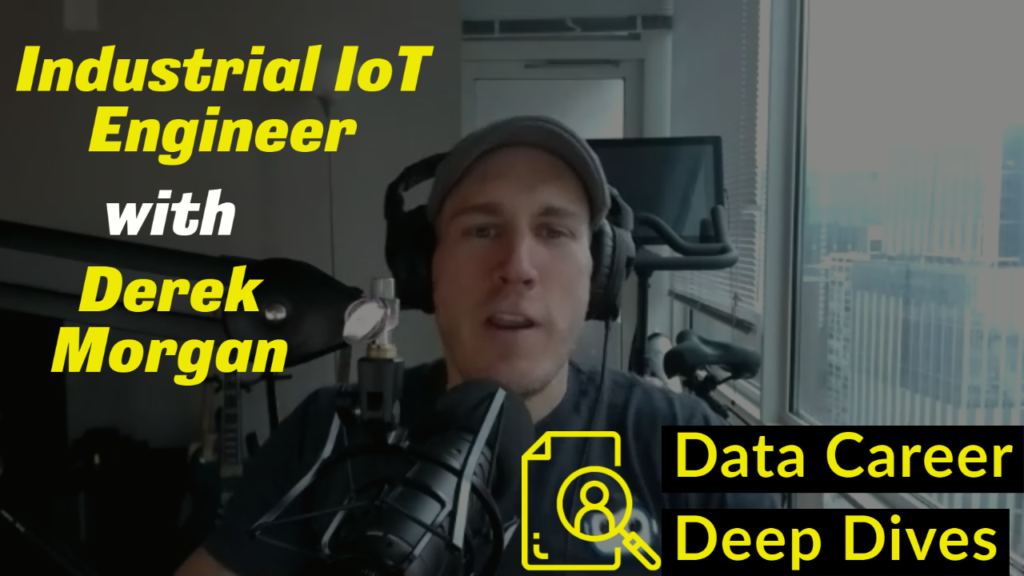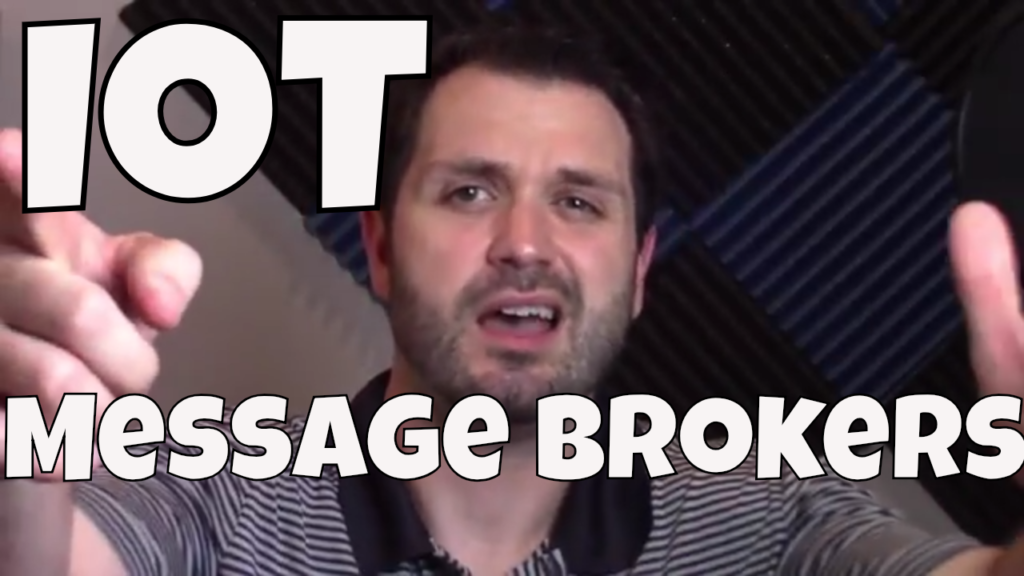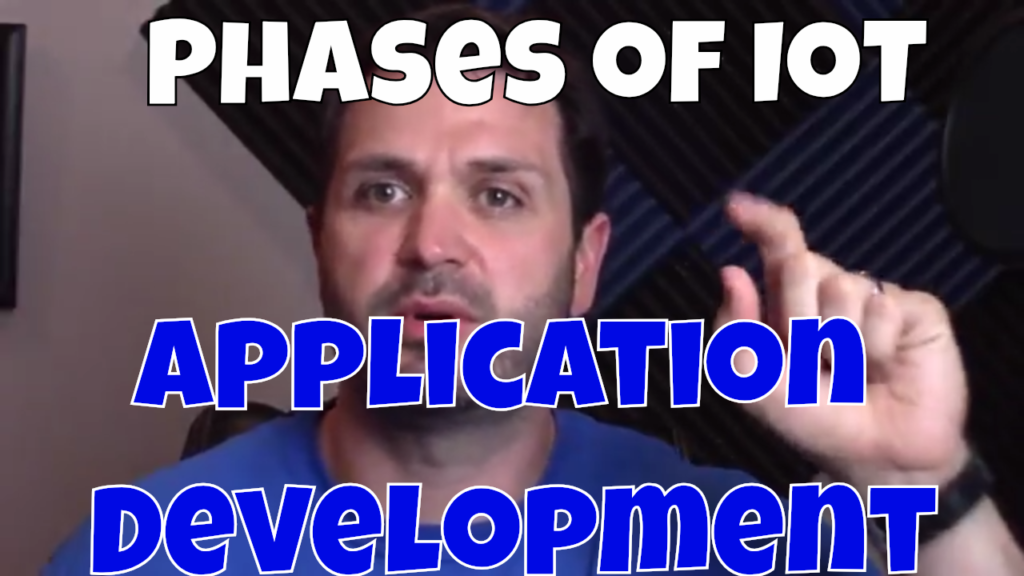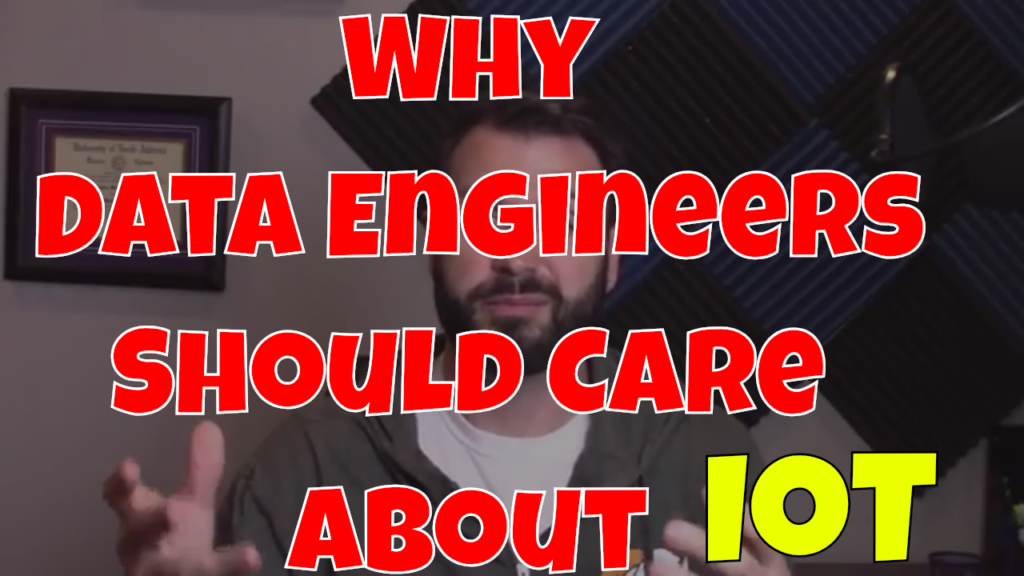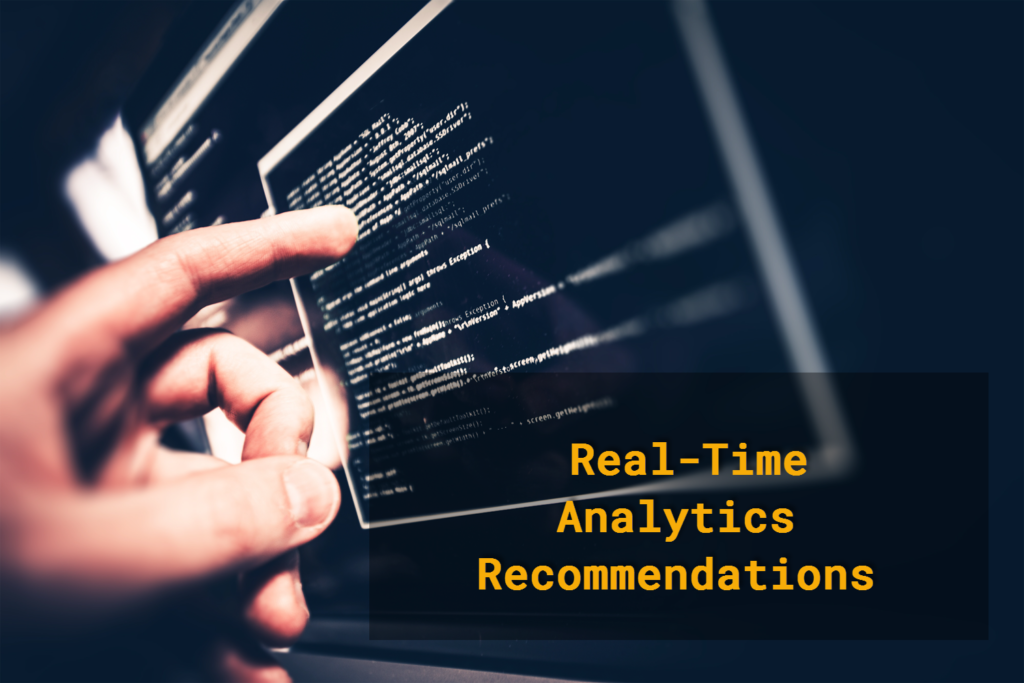Explore Career Path’s as Industrial IoT Engineer
IoT investments are projected to grow by 13.6% through 2022. There is a huge opportunity for developers to jump into a career in IoT and specifically as Industrial IoT Engineers. Data is at the forefront of skills needed for IoT workflows. In this interview I sat down with Derek Morgan to discuss the role of the IoT Engineer.
Derek has quite a bit of experience in IoT and has been focusing in Manufacturing space of IoT. During this episode of Big Data Big Questions we break down the skills needed to enter the IoT Engineering space and what certification matter. Here are a few of the items we cover:
-
- Tech Stack Rechner, Postgres, Python and Terraform
- How C ++ doesn’t apply here
- Cloud vs. Private Cloud for IoT
- Security Challenges with IoT
- Opportunities for IoT Engineers in this space
Make sure to checkout the full video below to understand the role of the Industrial IoT Engineer.
Industrial IoT Engineer Interview
IoT Engineer Show Notes
Derek Morgan LinkedIN
Terraform
More than Certified in Terraform Course
